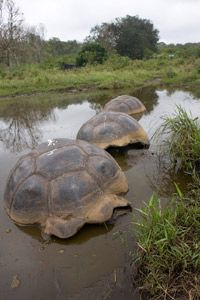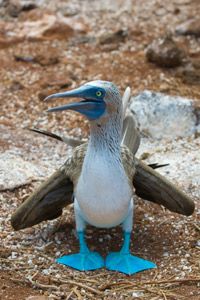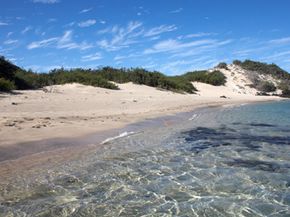Many of us recognize the Galapagos Islands as the place that inspired Charles Darwin's theory of evolution. Although Darwin made them famous, he can't take credit for their discovery. That distinction goes to Tomas de Berlanga, the Bishop of Panama, and his crew when their ship drifted there in calm ocean currents in 1535, 300 years before Darwin arrived on the HMS Beagle. De Berlanga and his men reported finding islands with tame wildlife, giant tortoise in abundance and little-to-no freshwater. While they didn't stick around, their nickname for the islands did: Galapagos, which means "tortoise" in Spanish.
The Galapagos Islands are a remote tropical archipelago made up primarily of 13 big islands: the Baltra, Espanola, Fernandina, Floreana, Genovesa, Isabela, Marchena, Pinta, Pinzon, San Cristobal, Santa Cruz, Santa Fe and Santiago. In addition to the 13 large islands, there are many more small islands and islets, all together about 3,000 square miles (8,000 square kilometers) of land total. They are spread out over 36,000 square miles (about 93,200 square kilometers) in the Pacific Ocean, a little more than 600 miles (1,000 kilometers) off the west coast of Ecuador [source: Galapagos Conservation Trust].
Advertisement
Although politically, Galapagos is a province of the Republic of Ecuador, most scientists believe the islands were never geologically part of the mainland, and were instead formed by volcanic activity about 5 million years ago on the Nazca Plate, a hot zone that's one of the most active volcanic places in the world. Some of the volcanoes on the western side of the archipelago are still active today, with more than 50 eruptions in the last 200 years, creating new land in this evolving region.
The enchantment of the Galapagos Islands, or as they're officially named, the Archipiélago de Colón, is that because of their remote location, they are home to plants and wildlife found nowhere else in the world.
Advertisement




